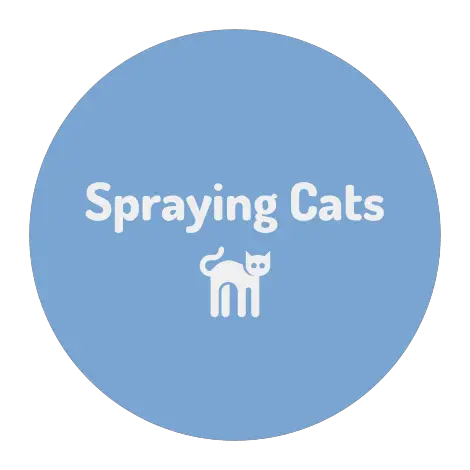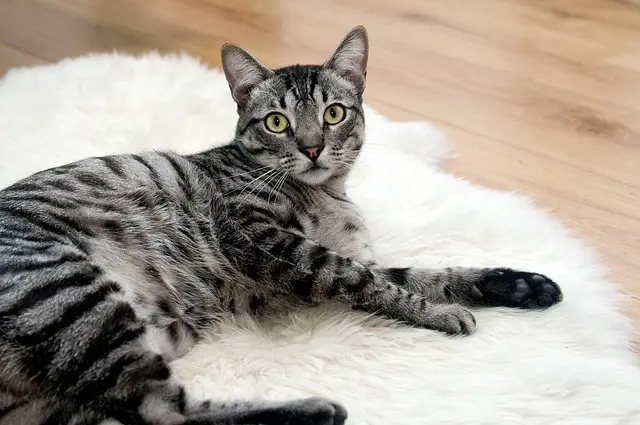Many cat owners have noticed that their feline friends are losing hair on their backs. This can be alarming and concerning, but it’s essential to understand the many potential reasons for this issue. Some of the most common causes of hair loss on a cat’s back include skin allergies, parasites, stress, and hormonal imbalances.
If your cat is experiencing hair loss on their back, it’s essential to take them to the vet for an examination.
The vet can help determine the underlying cause of the hair loss and recommend the best treatment. In some cases, simple changes to your cat’s diet or environment may be enough to resolve the issue, while in other cases, more extensive treatment may be necessary.
By working closely with your vet, you can help ensure your cat gets the care they need to stay healthy and happy.
Causes of Hair Loss
There are several reasons why a cat may experience hair loss on their back. Understanding the underlying causes is essential to getting the proper treatment. The following are common reasons why a cat may lose hair on their back.
Parasites
Parasites such as fleas, ticks, and mites can cause hair loss in cats. These parasites feed on the cat’s blood, leading to skin irritation, itching, and hair loss. Fleas, in particular, can cause a condition known as flea allergy dermatitis, which can cause severe itching and hair loss.
Allergies
Cats can develop allergies to various things, including food, pollen, dust, and even flea bites. Allergies can cause skin irritation, itching, and hair loss. Allergic reactions may also lead to secondary infections that can worsen hair loss.
Infections
Bacterial, fungal, and yeast infections can cause hair loss in cats. These infections can develop due to a weakened immune system, poor hygiene, or underlying medical conditions. Infections can cause skin irritation, itching, and hair loss.
Hormonal Imbalances
Hormonal imbalances such as hyperthyroidism and Cushing’s disease can cause hair loss in cats. These conditions affect the cat’s endocrine system, leading to hair loss, skin irritation, and other symptoms.
In conclusion, several reasons can cause a cat to lose hair on their back. Identifying the underlying cause is crucial to getting the proper treatment. If a cat is experiencing hair loss, it is essential to consult a veterinarian to determine the underlying cause and get the appropriate treatment.
Other Possible Reasons
There are several other reasons why a cat may be losing hair on their back. While this list is not exhaustive, some of the most common causes include stress, poor nutrition, and environmental factors.
Stress
Cats are sensitive creatures and can be easily stressed out by environmental or routine changes. Stress can cause a cat to over-groom, leading to hair loss on its back. Some familiar sources of stress for cats include:
- Moving to a new home
- Changes in the household (e.g., new pets, new family members)
- Loud noises or other disruptions
- Illness or injury
If a cat is experiencing stress, it is essential to identify and address the source of the stress as soon as possible. This may involve changing the cat’s environment or routine or providing additional support and attention.
Poor Nutrition
A cat’s diet is crucial to their overall health and well-being. A cat not getting the proper nutrients they need can lead to various health problems, including hair loss. Some common signs of poor nutrition in cats include:
- Dull, dry coat
- Excessive shedding
- Weight loss
- Lethargy
To ensure that a cat is getting the proper nutrition, it is essential to feed them a high-quality, balanced diet appropriate for their age and lifestyle.
Environmental Factors
Finally, there are a variety of environmental factors that can contribute to hair loss in cats. Some of the most common factors include:
- Fleas or other parasites
- Allergies to food, pollen, or other environmental factors
- Skin infections or other medical conditions
If a cat is experiencing hair loss due to environmental factors, it is crucial to identify and address the underlying cause immediately. This may involve treating the cat for fleas or other parasites, changing their diet or environment, or providing them with medication to treat an underlying medical condition.
When to See a Vet
If your cat is losing hair on her back, it is essential to monitor the situation closely. While some shedding is normal, excessive hair loss could indicate an underlying health issue. Here are some signs to look out for that mean it’s time to see a vet:
- Bald patches: If your cat has bald patches on her back, it could be a sign of a skin condition or parasite infestation. A vet can examine the patches and determine the cause of the hair loss.
- Scratching or biting: If your cat constantly scratches or bites at her back, it could be a sign of fleas, ticks, or other parasites. A vet can check for these and provide appropriate treatment.
- Changes in behavior: If your cat seems lethargic, is not eating or drinking as much as usual, or is avoiding contact, it could be a sign of an underlying health issue. A vet can perform a thorough exam and determine the cause of the changes in behavior.
- Other symptoms: If your cat is experiencing other symptoms, such as vomiting, diarrhea, or difficulty breathing, it is essential to seek veterinary care immediately.
In general, if you are concerned about your cat’s hair loss or overall health, it is always better to avoid caution and schedule a visit with a vet. A qualified veterinarian can provide a proper diagnosis and treatment plan to help your cat feel better and return to her usual self.
Treatment Options
Medication
If the cause of the hair loss is a medical condition, medication may be necessary to treat the underlying issue. Your veterinarian may prescribe medication to treat allergies, infections, or other medical conditions that could be causing hair loss. It is essential to follow the veterinarian’s instructions carefully and complete the entire course of medication.
Topical Treatments
Topical treatments can help stimulate hair growth and soothe the skin. Some options include medicated shampoos, conditioners, and sprays. These products can help reduce inflammation and itching, which may be contributing to hair loss. It is important to choose products specifically designed for cats and follow the instructions carefully.
Dietary Changes
Dietary changes may also be necessary to address the underlying cause of hair loss. Your veterinarian may recommend a special diet or supplements to address nutritional deficiencies or other health issues. Following the veterinarian’s recommendations closely and monitoring your cat’s progress is important.
In addition to these treatment options, providing your cat with a stress-free environment and plenty of opportunities for exercise and play is important. Regular grooming can also help promote healthy skin and coat. If you notice any changes in your cat’s behavior or health, it is essential to consult your veterinarian immediately.
[su_box title=”Affiliate Disclosure”]This website is supported by its readers. Please assume that all links are affiliate links. If you make a purchase from one of the links we will make a commission from Amazon. Thank you.[/su_box]




